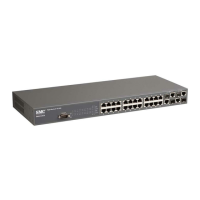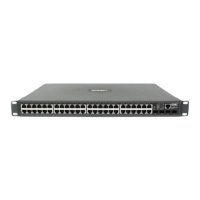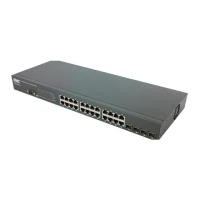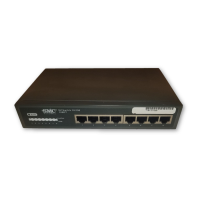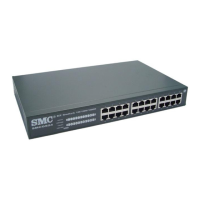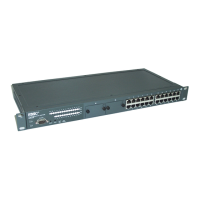C
ONFIGURING
THE
S
WITCH
3-156
- A spanning tree instance can exist only on bridges that have
compatible VLAN instance assignments.
- Be careful when switching between spanning tree modes. Changing
modes stops all spanning-tree instances for the previous mode and
restarts the system in the new mode, temporarily disrupting user
traffic.
Command Attributes
Basic Configuration of Global Settings
• Spanning Tree State – Enables/disables STA on this switch.
(Default: Enabled)
• Spanning Tree Type – Specifies the type of spanning tree used on
this switch:
- STP: Spanning Tree Protocol (IEEE 802.1D); i.e., when this option
is selected, the switch will use RSTP set to STP forced compatibility
mode).
- RSTP: Rapid Spanning Tree (IEEE 802.1w); RSTP is the default.
- MSTP: Multiple Spanning Tree (IEEE 802.1s);
• Priority – Bridge priority is used in selecting the root device, root port,
and designated port. The device with the highest priority becomes the
STA root device. However, if all devices have the same priority, the
device with the lowest MAC address will then become the root device.
(Note that lower numeric values indicate higher priority.)
- Default: 32768
- Range: 0-61440, in steps of 4096
- Options: 0, 4096, 8192, 12288, 16384, 20480, 24576, 28672, 32768,
36864, 40960, 45056, 49152, 53248, 57344, 61440
Root Device Configuration
• Hello Time – Interval (in seconds) at which the root device transmits
a configuration message.
-Default: 2
- Minimum: 1
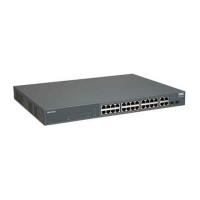
